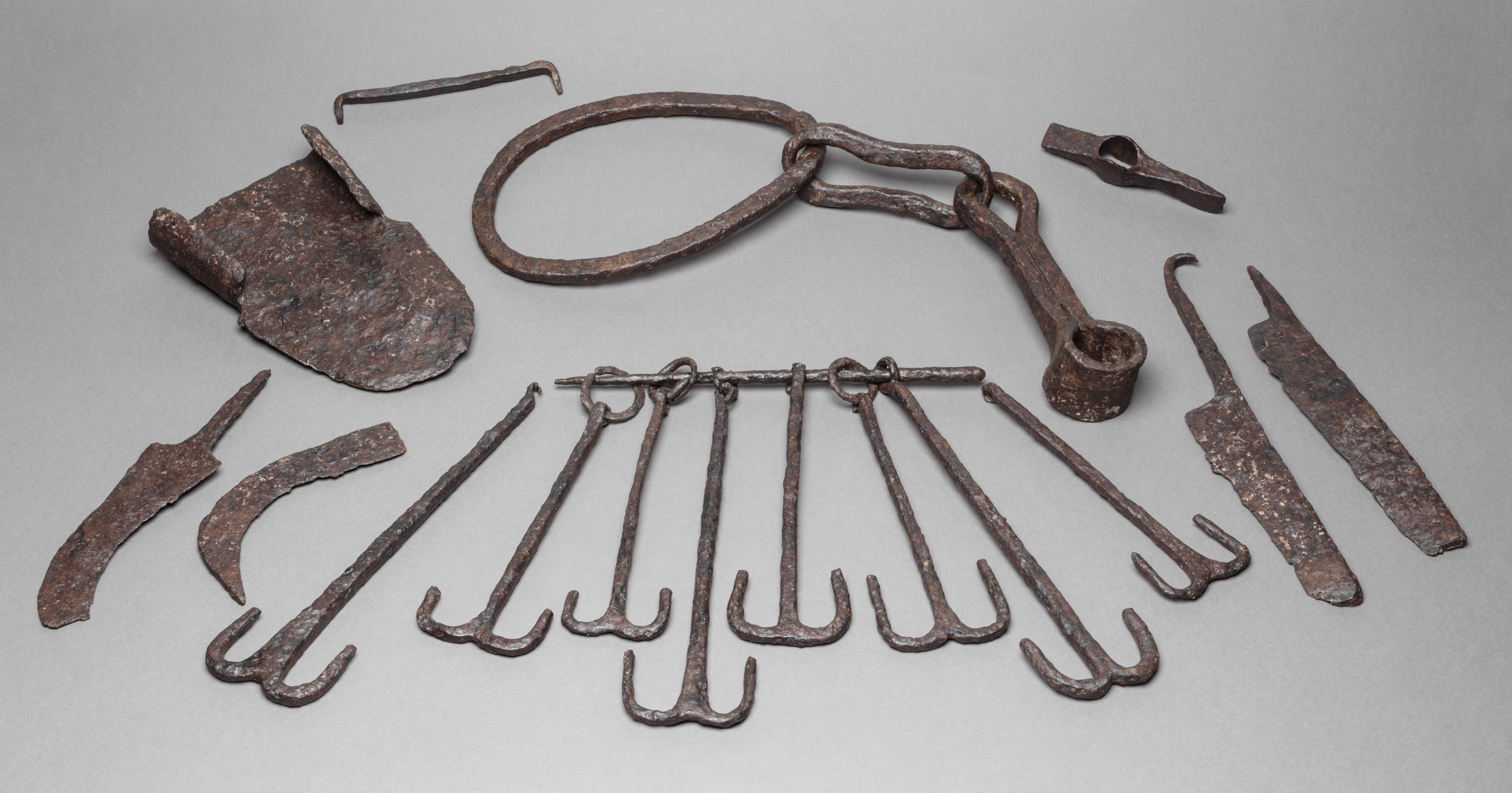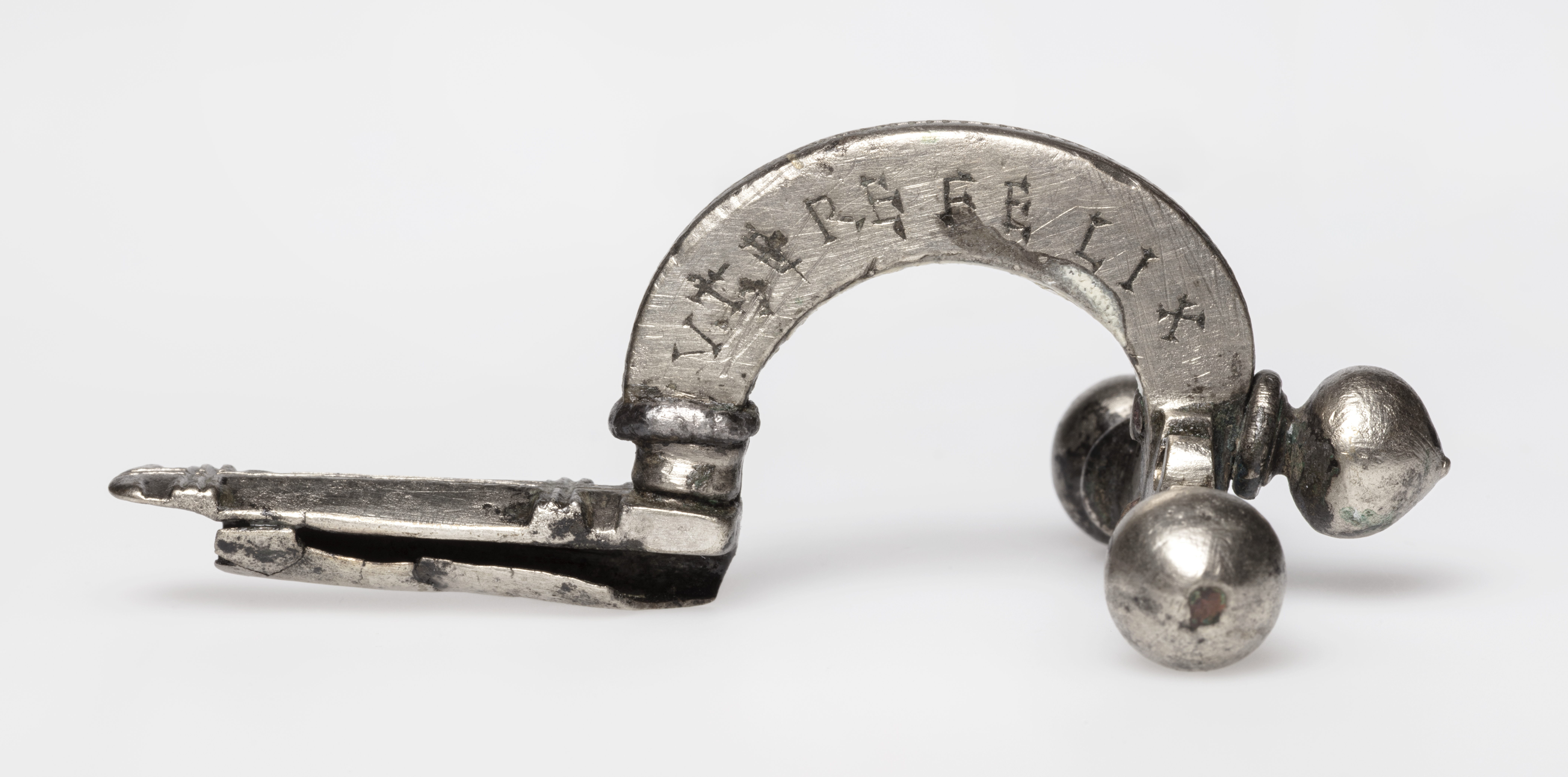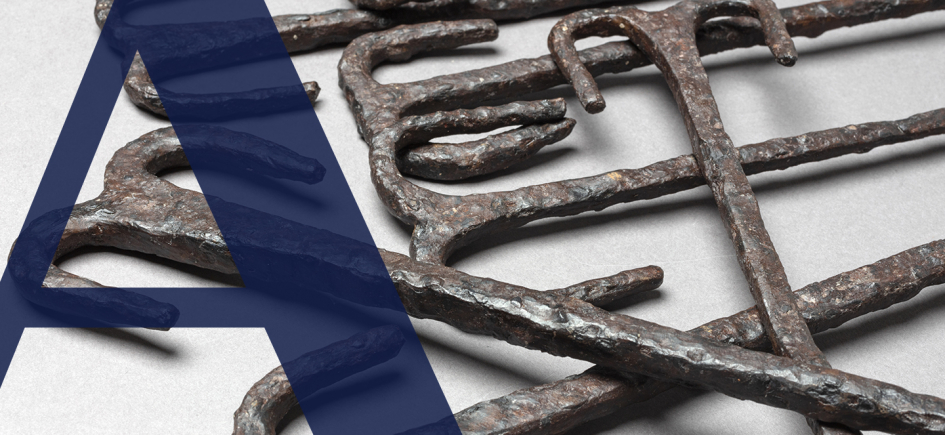
As autumn is the season when the tools of harvest are brought out once again, the September Artefact of the Month is a remarkable Roman assemblage unearthed from deep in the soil. This iron deposit was discovered last year on the outskirts of Pincehely, Tolna County. It consists mainly of agricultural and craft tools, but also features a particularly important find: a complete set of keys.
 Roman Period iron tool deposit
Roman Period iron tool deposit This extensive site was occupied at intervals from prehistory until the end of the Middle Ages, including during the Roman Period. Although much of it remains unexcavated, the Hungarian National Museum has acquired notable Roman artefacts from the site since the 1860s—including three exceptional onion brooches, which are also featured in the exhibition.
 The site and its surroundings at Pincehely, Bogarasi határ
The site and its surroundings at Pincehely, Bogarasi határ The hoard comprises eleven artefacts. Among them, the ploughshare and ploughchain provide direct evidence of agricultural activity, while the distinctive vine-pruning billhook is a tangible reminder of the advanced horticulture and viticulture practised by the Romans in Pannonia and elsewhere. The axe head and saw blade fragments relate to crafts and domestic tasks. Perhaps the most striking component is a set of so-called T-shaped lift keys, still hanging on the small iron bar on which they had originally been stored. The discovery of this assemblage is hopefully only the first step in outlining a picture of the Roman Period settlement of the area.
After exploring September’s Artefact of the Month, an ideal autumn programme might be a visit to the Villa Romana Baláca, a Roman villa estate and ruin garden near Nemesvámos, open until 31 October. Its lavish mosaic floors, painted walls, carvings in the stone collection, and the buildings of the villa farm vividly evoke the atmosphere of the Roman era, giving visitors a glimpse into provincial life. The Artefact of the Month can be viewed in the Széchényi Hall of the Hungarian National Museum with a ticket for the permanent exhibition, until 28 September 2025.
Further interesting facts about the Artefact of the Month:
ROMAN PERIOD BROOCHES FROM PINCEHELY
The centrepiece of September’s Artefact of the Month exhibition is an exceptional deposit of Roman Period iron tools, unearthed near Pincehely in Tolna County. Yet the Hungarian National Museum had already acquired Roman artefacts from the area much earlier. In 1866, the local Catholic priest, István Hangyali—an attentive observer of local events—donated several Roman antiquities to the Museum, including three brooches. Unfortunately, no information about their find circumstances was recorded.
Two of these are so-called onion brooches, a type that came into fashion relatively late, around the end of the 3rd century AD. Such items were typically worn by men, used to fasten a cloak on the right shoulder, with the buttons pointing downwards. One of the three brooches is made of silver, marking the high social status of its former owner. These brooches were worn by senior military officers and officials alike; as most were produced in central imperial workshops, their presentation may even have been linked to official appointments.
The arched bows of some examples bear inscriptions, ranging from general greetings and good wishes—such as VTERE FELIX (“Use with fortune!”)—to the names of their owners. Taken together, these finds suggest the presence of a significant settlement in the Late Roman period (3rd–4th centuries AD) in the area of present-day Pincehely.
 Silver onion brooch with VTERE FELIX (“Use with fortune”) inscription from Szentendre (Kiss Ferenc Collection)
Silver onion brooch with VTERE FELIX (“Use with fortune”) inscription from Szentendre (Kiss Ferenc Collection)
The Artefact of the Month can be viewed in the Széchényi Hall of the Hungarian National Museum with a ticket for the permanent exhibition, until 28 September 2025.









